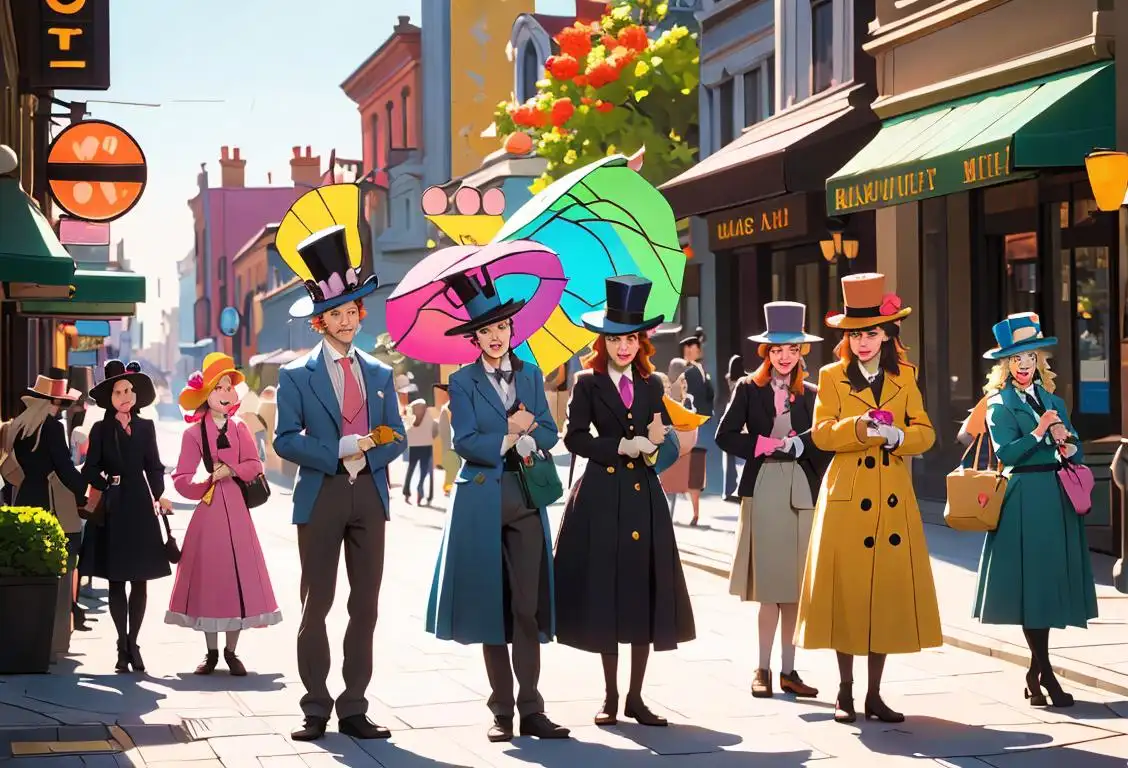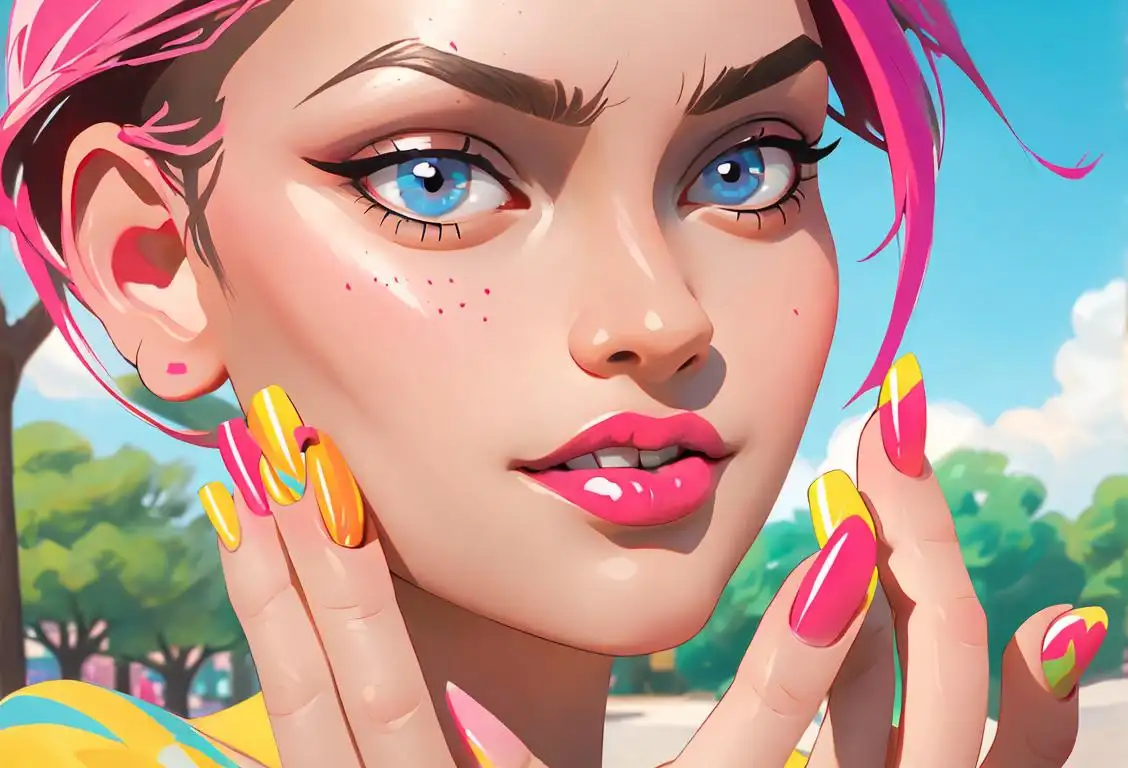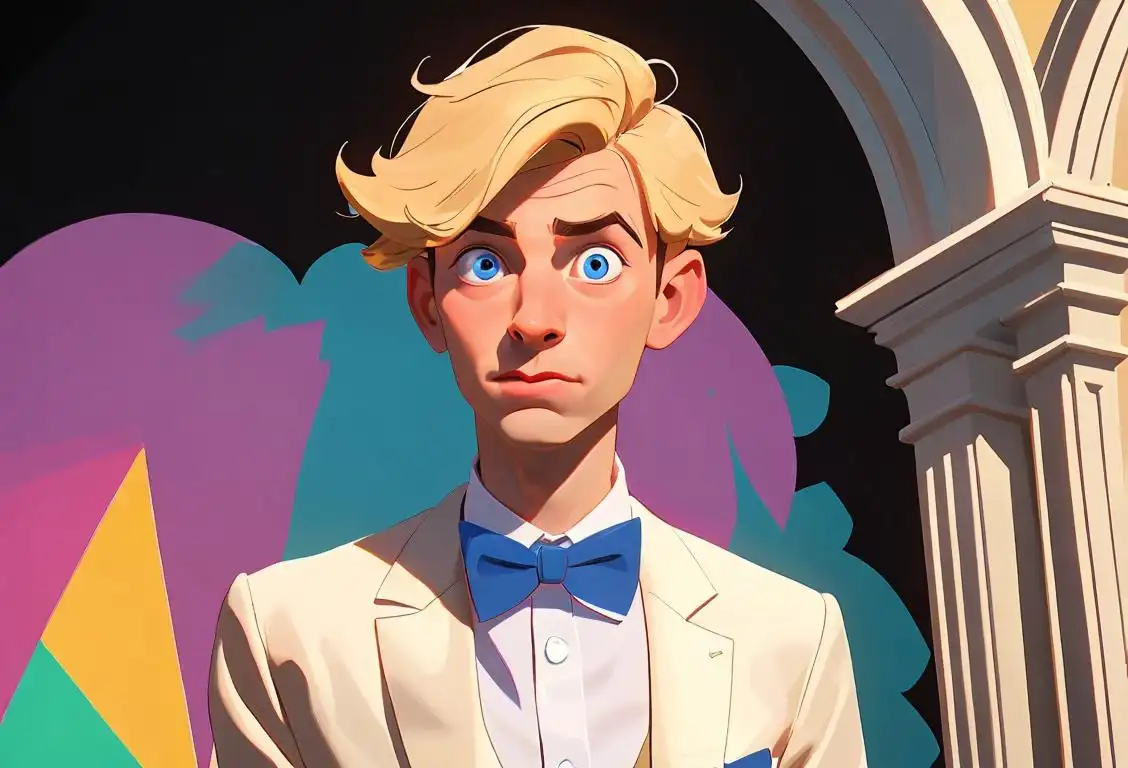National Hatter Day

Have you ever found yourself in a mad frenzy to find the perfect hat to complete your outfit? Well, you're not alone, my friend! National Hatter Day is here to celebrate all the hat enthusiasts out there, from the classic fedora wearers to the wackiest hat collectors. So, grab your favorite headgear and get ready to tip your hat to this fabulous and fashionable day!
When is Hatter Day?
It's national hatter day on the 23rd September.
The Origin of National Hatter Day
While the exact origins of National Hatter Day remain a mystery (just like a magician's top hat), one thing is for sure – hats have always had a special place in our hearts (and on our heads). Hats have been worn throughout history as a symbol of social status, a fashion statement, or simply to protect our delicate scalps from the scorching sun or chilly winds.
With the rise of social media, finding hat enthusiasts from all corners of the globe has become as easy as a few clicks. National Hatter Day was created to bring all these passionate hat lovers together in a virtual celebration of style, elegance, and whimsy!
How to Celebrate National Hatter Day
Ready to don your finest headwear and join in the festivities? Here are a few fun ways to celebrate National Hatter Day:
- Host a Hat Party: Invite your friends over for a hat-themed celebration, complete with a hat parade, hat-making contest, and of course, lots of hat-shaped snacks!
- Go Hat Shopping: Treat yourself to a new hat or two (or three). Whether you prefer a classic bowler hat, a trendy snapback, or maybe a festive sombrero, there's a hat out there for every occasion and personal style.
- Create Hat Art: Get crafty and transform an old hat into a one-of-a-kind masterpiece. Paint, glue, glitter, feathers – let your imagination run wild!
- Share Your Favorite Hat: Take a selfie, strike a pose, and share your favorite hat on social media using the hashtag #NationalHatterDay. You might just inspire someone else to start their own hat collection!
Did You Know?
Did you know that the world's largest hat collection belongs to a man named David Sax? He has over 5,000 hats in his collection, ranging from vintage classics to peculiar headpieces. Talk about dedication to the art of hat-wearing!
History behind the term 'Hatter'
1170
The Rise of the Hat-Making Trade
In 1170, the hat-making trade started to evolve in Europe, particularly in England and France. During this time, hats were primarily made by hand from materials such as wool, felt, and straw. Hat-makers, known as hatters, used their craftsmanship to create a wide variety of headwear worn by both men and women.
16th Century
The Origins of the Term 'Hatter'
The term 'hatter' originated in the 16th century when the hat-making trade became more prominent. It is derived from the Middle English word 'hatte', which means 'hat,' combined with the suffix '-er' indicating a person engaged in a specific occupation. Thus, a 'hatter' referred to a person who made or sold hats.
18th Century
The Hatter's Mark
During the 18th century, hatters in England began to use personalized marks or signatures on their hats. These marks were used as a way to distinguish the hats they produced, ensuring quality and craftsmanship. The marks were often unique to each hatter and served as a branding method in the hat-making industry.
19th Century
The Mad Hatter Character in Literature
The term 'hatter' gained further recognition with the release of Lewis Carroll's famous novel 'Alice's Adventures in Wonderland' in 1865. The character of the Mad Hatter, known for his eccentricity and love for hats, became an iconic figure in literature. This portrayal added to the cultural significance of the term 'hatter' and its association with creativity and whimsy.
20th Century
The Decline of Traditional Hat-making
With the advent of industrialization and changing fashion trends, traditional hat-making began to decline in the 20th century. Mass production methods and the rise of alternative headwear options led to a decrease in the number of hatters and a shift towards factory-made hats. However, the term 'hatter' continued to evoke nostalgia for the craft and the skilled artisans who were once synonymous with hat-making.
Did you know?
Did you know that the world's largest hat collection belongs to a man named David Sax? He has over 5,000 hats in his collection, ranging from vintage classics to peculiar headpieces. Talk about dedication to the art of hat-wearing!Tagged
fun fashionFirst identified
22nd September 2017Most mentioned on
23rd September 2017Total mentions
29Other days
Croc Day
Handbag Day
Nail Polish Day
Hijab Day
Bow Tie Day
Batik Day
Ugly Christmas Sweater Day
Hat Day
Dress Like Your Inner Hoe Day
Sock Day








